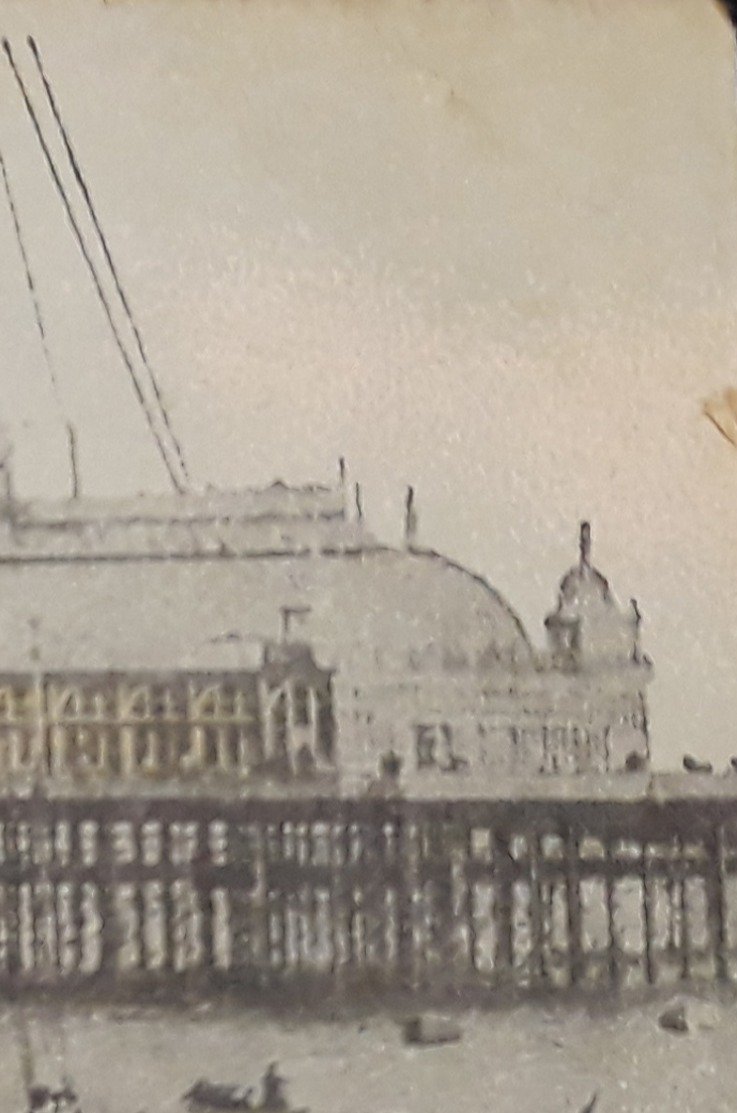Used for pleasure and as the RNLI lifeboat station, Southend Pier is the longest in the world. Designed by James Brunlees, this 2,2158m construction consists of hardwood decking upon iron piles and was opened in 1830. The original construction, however, was first opened in 1830 after receiving Royal Assent the previous year and was of complete wooden structure. Southend was the first pier to operate a railway in Britain, which opened in the early 1890’s.
West Beach and Pier Pavilion, Southend on Sea (1900s)

Southend Pier played a part in both
World Wars. During WWI three ships were moored off the pierhead, one held
German soldiers captured in France and the other two held civilians.
Remarkedly, the pier remained open for recreation.
During WWII the pier was taken over by the Navy, renamed HMS Leigh and was closed to the public. In November 1939 a ninety-minute air raid was deferred by the pier’s defenders. 84,000 ships passed Southend in total, with only one casualty—SS Richard Montgomery and we have blogged about this ship already [here].
Post war, the pier flourished for several years but in 1959 a fire destroyed the pavilion which was located at the shore end. Five-hundred people were trapped and in need of rescue, which happened by boat. The pavilion was replaced by a ten-pin bowling alley and holidaying to Southend reached was reaching its heyday.
As holidaymakers turned to package holidays abroad, Southend like many other British seaside towns begun to decline and the pier run into disrepair. Several fires later and by 1980, the council announced its plans to close the pier. Protesters battled to keep it open.
Fire has destroyed parts of the pier several times, and in October 2005 it caused significant damage to the old pierhead and surrounding structures. By 1st December of the same year, it had reopened to the public once again and by 2007 had won pier of the year.
Southend seafront has seen considerable investment and regeneration over the past few years, and in our opinion is worthy of a visit!
Postcard image credit, Elizabeth Ponder
